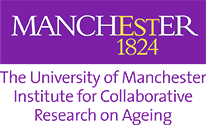Frailty and genetics
Contact: Krisztina Mekli
Email: krisztina.mekli@manchester.ac.uk
Short introduction
Although it is not easy to define exactly, there is growing agreement in the scientific community that frailty of the elderly is a non-specific state reflecting a reduced functional reserve and decrease in adaptation to any sort of stressors. The overall consequence is that frail elder people are at higher risk for accelerated physical and cognitive decline, disability and death.
The Fraill Project’s overarching hypothesis is that the integration of socioeconomic and biological determinants will predict the onset of frailty in older people.
Much research has been focused on developing measures distinguishing those with and without frailty. One widely accepted measure is the Fried phenotype, which uses five specific criteria such as unintentional weight loss, exhaustion, low physical activity, slowness and weakness to characterise frail individuals (Fried et al. 2001).
The genetic investigation of the Fraill Project has three steps
First step: candidate gene approach
We make use of the already available genetic information of the English Longitudinal Study of Ageing (ELSA) phenotype and genotype dataset and select genes which have been indicated in the literature as potential involvement in frailty. The exact biological pathways of frailty are not known but higher plasma interleukin 6 (IL-6) and C-reactive protein (CRP) (Fulop et al. 2010) levels and higher ratios of cortisol to dehydroepiandrosteron-sulphate (DHEA-SO4) (Baylis et al. 2012) have been strongly associated to frailty, indicating the role of systemic inflammation and the HPA axis/cortisol system. Therefore we select genes covering these pathways and perform association analysis against the performance-based Fried frailty phenotype.
Second step: genome wide (GW) association analysis
In this step we focus on common variants in the genome using the Illumina Omni 2.5 quad chip and investigate how much of the variance in frailty can be explained by these common variants. The second purpose of the GW approach is to perform a comprehensive pathway analysis to discover biological processes underlying this phenotype.
Third step: replication
To validate our findings we attempt a replication in the American Health and Retirement Study (HRS). This study has very similar phenotypic measures and identical genotype data which puts us into the unique position where direct comparison of the results is possible. Key metabolites identified from the genetic analysis will be measured in blood samples of participants to facilitate the development of a systems level understanding frailty in later life.
References
Baylis D, Bartlett DB, Syddall HE, Ntani G, Gale CR, Cooper C, Lord JM, Sayer AA. Immune-endocrine biomarkers as predictors of frailty and mortality: a 10-year longitudinal study in community-dwelling older people. Age (Dordr). 2012 Mar 3
Fried LP, Tangen CM, Walston J, Newman AB, Hirsch C, Gottdiener J, Seeman T, Tracy R, Kop WJ, Burke G, McBurnie MA; Cardiovascular Health Study Collaborative Research Group. Frailty in older adults: evidence for a phenotype. J Gerontol A Biol Sci Med Sci. 2001 Mar;56(3):M146-56
Fulop T, Larbi A, Witkowski JM, McElhaney J, Loeb M, Mitnitski A, Pawelec G. Aging, frailty and age-related diseases. Biogerontology. 2010 Oct;11(5):547-63. Review.
ELSA - English Longitudinal Study of Ageing:
